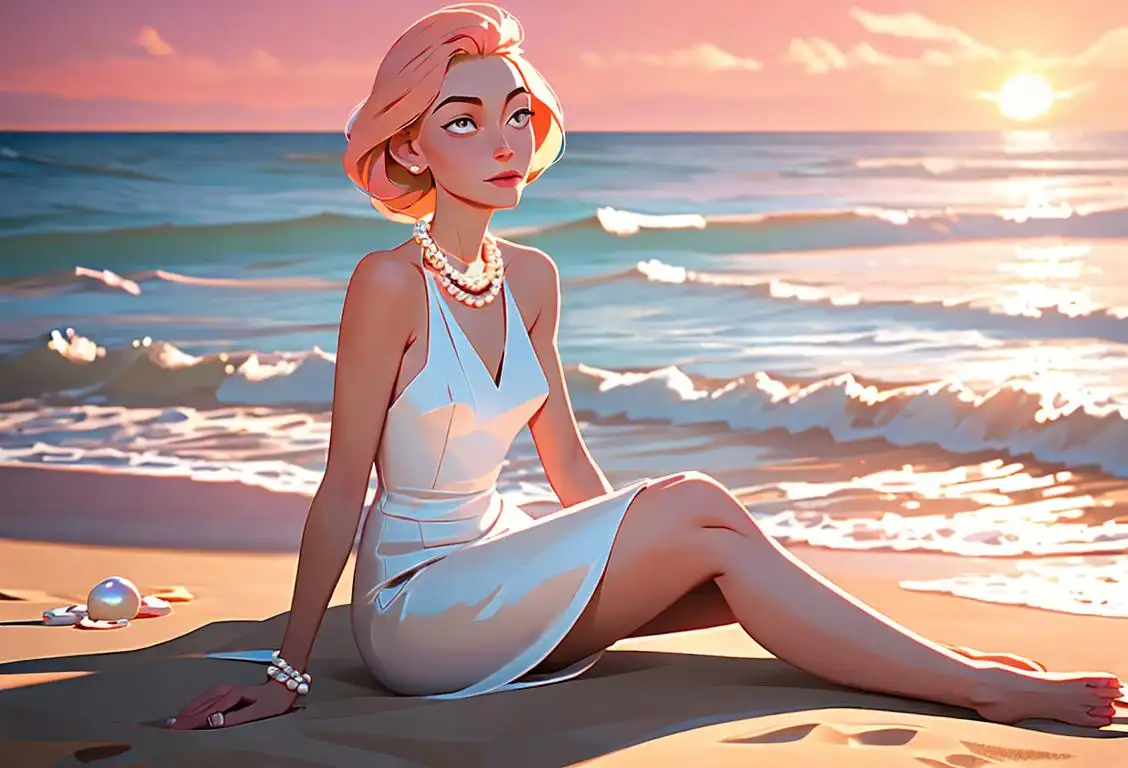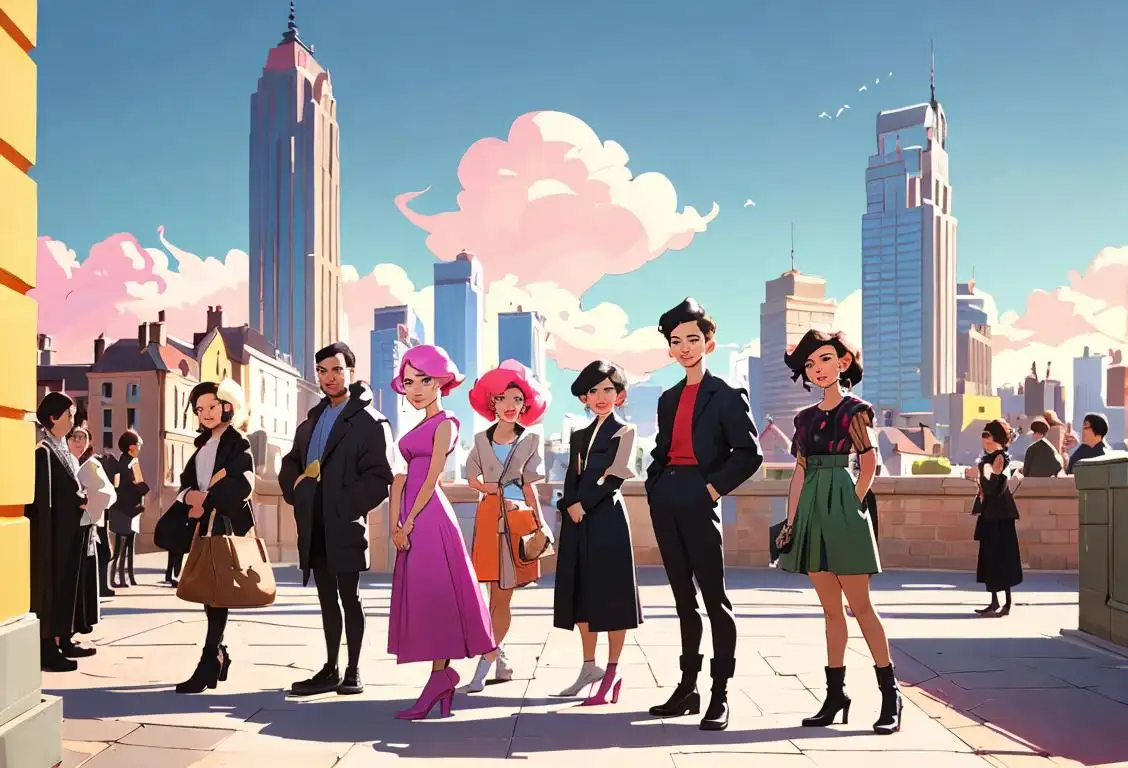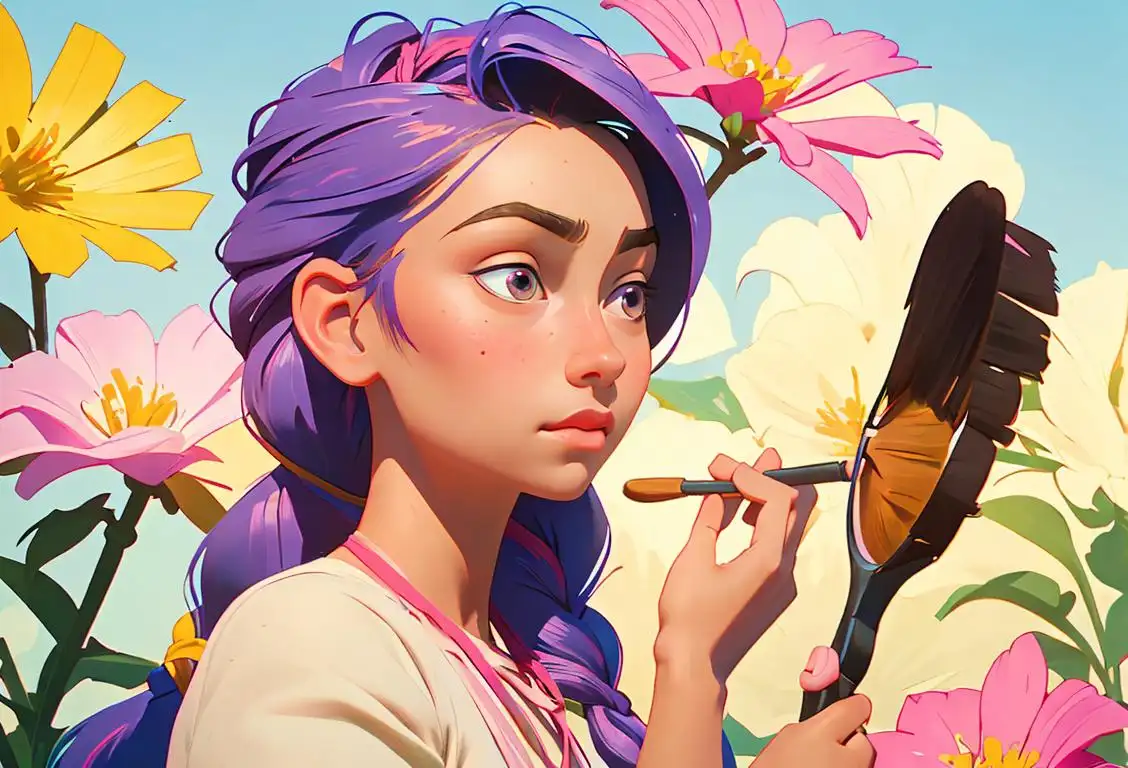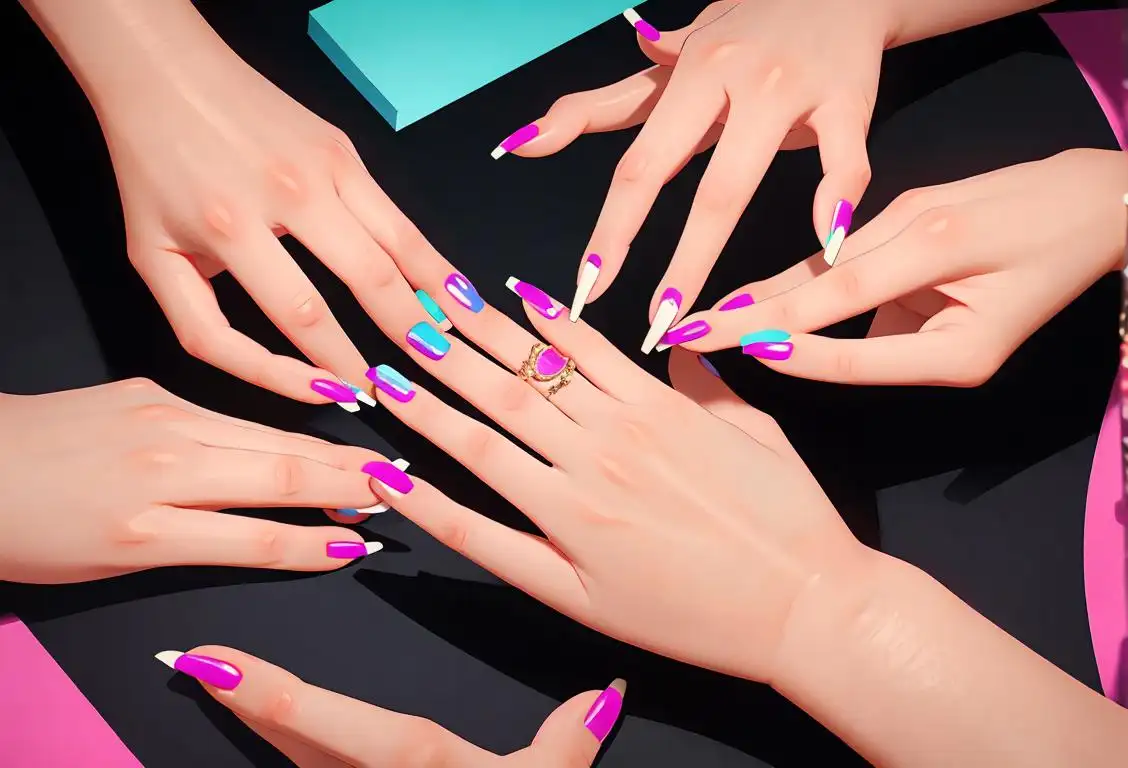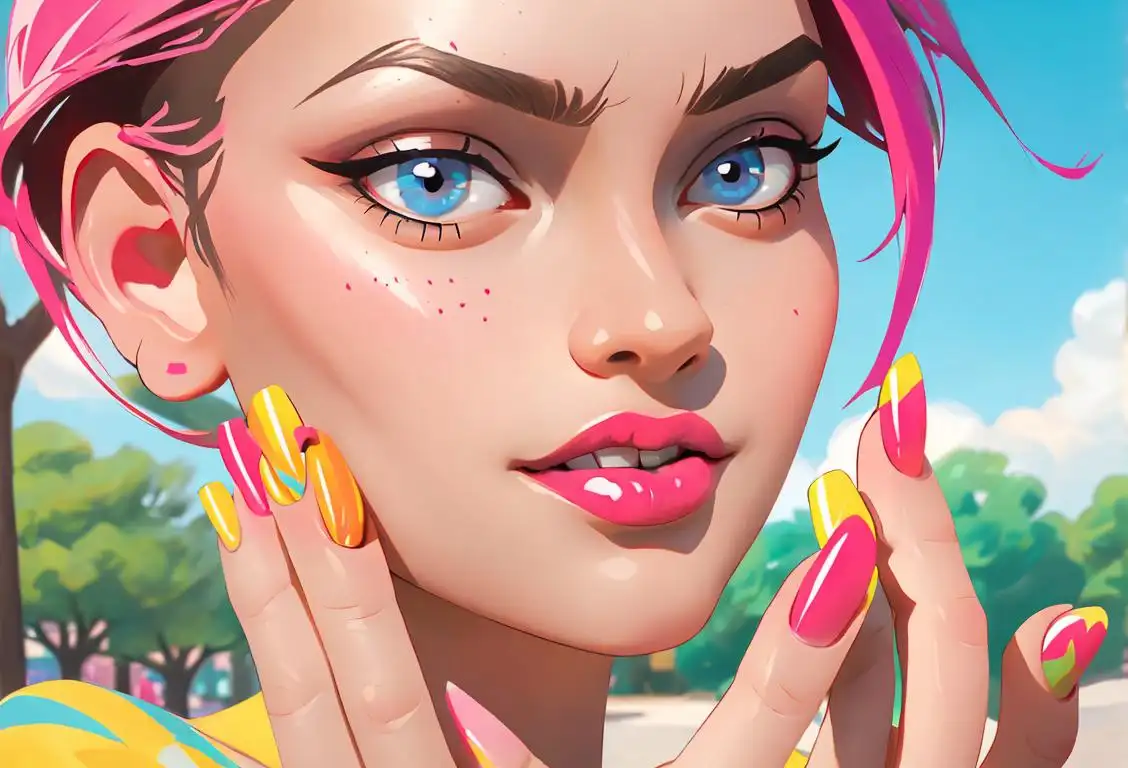National Lipstick Lipstick Day
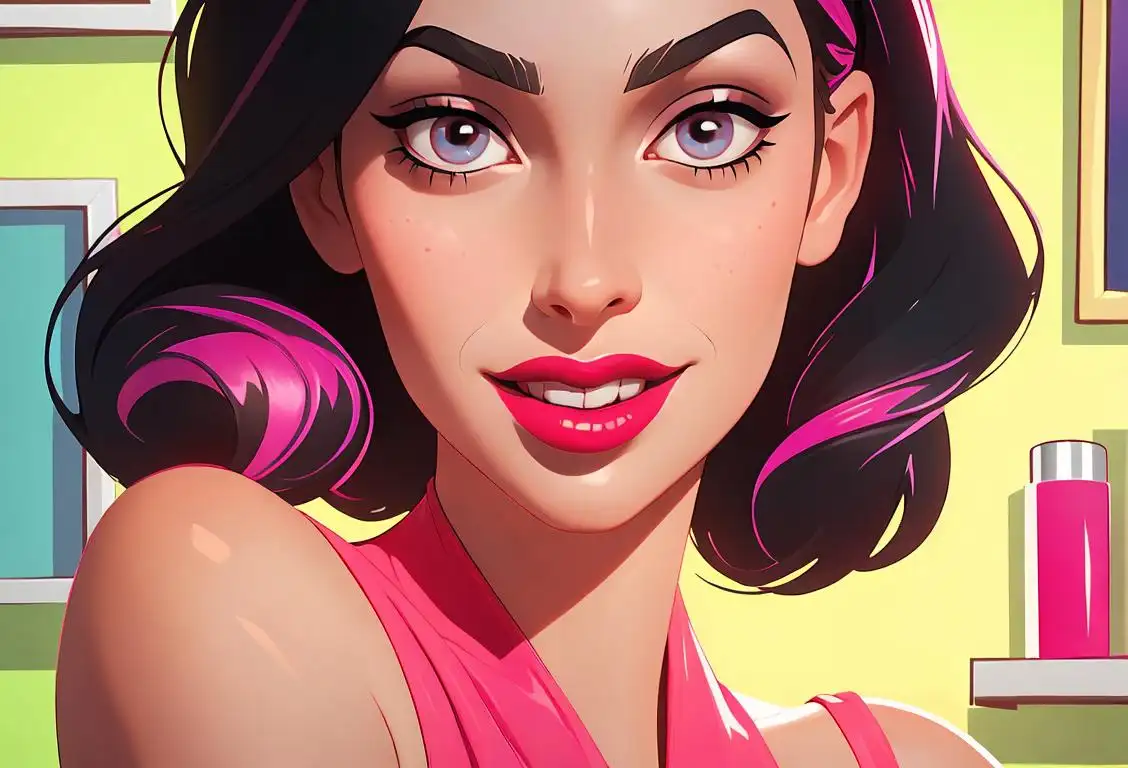
Welcome to the fabulous world of National Lipstick Day! Get ready to pucker up and prepare to be amazed by the history and celebration of this glamorous day. On this day, we honor the iconic beauty product that has been enhancing smiles and boosting confidence for generations. So, let's dive into the luscious world of lipstick and explore its fascinating journey!
When is Lipstick Lipstick Day?
It's national lipstick lipstick day on the 29th July.
A Brief History of Lipstick
From ancient civilizations to modern fashion runways, lipstick has adorned the lips of countless individuals. The origins of lipstick can be traced back to around 5,000 years ago, where its significance began in ancient Sumer, Mesopotamia. Both men and women of high social status wore lip color made from crushed gemstones.
Fast forward to ancient Egypt, and we find Queen Cleopatra making her mark with her signature deep red lips. Using a mixture derived from crushed beetles and ants, she created a look that would captivate hearts for centuries to come.
During the Renaissance, lipstick took a hit due to the association with sin and witchcraft. However, in the 16th and 17th centuries, Queen Elizabeth I of England boldly revived the trend, and lipstick made its comeback to grace the faces of noble women.
In the 20th century, lipstick underwent a major evolution. In 1915, Maurice Levy invented the metal lipstick tube, revolutionizing its packaging and making it more convenient for everyday use. The rise of Hollywood glamour in the 1920s further popularized lipstick, with stars like Clara Bow and Louise Brooks sporting vibrant shades on the silver screen.
Today, lipstick is a multi-billion dollar industry, with endless shades and formulas to cater to every individual's personal style and preference.
Celebrating National Lipstick Day
National Lipstick Day is the perfect occasion to embrace your inner diva and experiment with different shades and finishes. Whether you prefer classic red, bold pinks, or subtle nude tones, there's a shade out there for everyone.
Many beauty brands and retailers offer promotions and discounts on National Lipstick Day, allowing makeup enthusiasts to expand their beauty collections without breaking the bank. Keep an eye out for special offers and giveaways to score some amazing lipstick deals.
Not only is National Lipstick Day a celebration of beauty and self-expression, but it's also an opportunity to appreciate the history and artistry behind this beloved cosmetic. Take a moment to explore the various lipstick brands, learn about their background stories, and discover the inspirational women who made a mark in the industry.
Did You Know?
Did you know that the average woman consumes approximately 4-9 pounds of lipstick in her lifetime? That's right, lipstick lovers! Every time you swipe on your favorite shade, a little bit of it ends up on your lips, making your pout even more irresistible. So, if you've ever wondered where your lipstick goes, now you know!
History behind the term 'Lipstick Lipstick'
1884
The birth of the term 'lipstick'
The term 'lipstick' was first used in 1884. It derived from the earlier term 'lip-salve' which was commonly used to describe cosmetic products applied to the lips. The new term 'lipstick' quickly gained popularity and became widely used to refer to products specifically designed for coloring and enhancing the lips.
3,500 BCE
The Ancient Origins
The history of lipstick dates back to 3,500 BCE when the first known lipstick-like cosmetics were used by the ancient Sumerians. They crushed gemstones and used the resulting powders to decorate their lips and eyes for religious and social ceremonies. This early form of lipstick was a symbol of wealth and status.
3500 BC
Early Beginnings
The use of lip color can be traced back to ancient Mesopotamia, where both men and women used a form of lipstick made from crushed gemstones and minerals. The pigments were mixed with various natural substances like clay or animal fats to create a paste-like consistency. This early form of lipstick was worn to signify social status and was considered a symbol of wealth and power.
1912
The iconic twist-up tube design
In 1912, a pivotal innovation in lipstick packaging took place. Maurice Levy, a French perfumer, introduced the revolutionary twist-up tube design. This ingenious invention replaced the need for messy and unhygienic dipping methods previously used to apply lipstick. The twist-up tube allowed for easy and controlled application, making lipstick more convenient and popular among women.
1700 BC
Egyptian Influence
Egyptians were known for their love of luxurious cosmetics, and the use of lipstick played a significant role in their beauty rituals. Egyptian women created lip color by grinding precious gems, such as carmine and iodine, to produce vibrant shades. The application of lipstick was not only for aesthetic purposes but also believed to have magical or protective properties. It was customary for both men and women to wear lipstick as part of their daily lives.
1st century CE
Egyptian Innovations
In ancient Egypt, around the 1st century CE, both men and women applied lip colors. Cleopatra, the famous Egyptian queen, was known for her iconic colored lips. Egyptians used a mixture of various natural ingredients such as henna, iron oxide, and iodine-containing compounds to create lip pigments. The purpose of applying lip colors extended beyond beauty; it was also believed to have magical and protective properties.
16th century
European Renaissance
During the European Renaissance, lipstick faced a backlash due to religious and moral objections. The religious authorities associated it with witchcraft and impropriety. However, the trend reemerged when Queen Elizabeth I of England declared that pale lips were a sign of nobility. Women began using lead-based white powders and vermilion pigments to color their lips.
16th Century
European Renaissance
During the European Renaissance, the use of lipstick became associated with social class and was primarily used by the upper echelons of society. Women would create their lip color by using a combination of natural ingredients like red ochre, beeswax, and plant-based dyes. However, the popularity of lipstick began to decline towards the end of the Renaissance due to the association with witchcraft.
1923
The impact of silent films
During the 1920s, silent films dominated the entertainment industry, and the actresses of this era heavily influenced fashion and beauty trends. Actresses like Clara Bow and Theda Bara popularized the bold and distinctive lipstick looks on the big screen. This cinematic influence played a significant role in the widespread adoption of lipstick by women, who sought to imitate the glamorous styles of their favorite actresses.
1884
Commercial Lipstick
The modern commercial lipstick as we know it today originated in 1884 when perfumers in Paris began producing lipsticks in a moldable and reasonably stable form. These lipsticks were made from a combination of deer tallow, beeswax, and various red dyes. The adjustable containers made it easier to carry and use lipstick on the go.
1883
Modern Lipstick Invention
The modern formulation of lipstick as a solid stick was revolutionized by French perfumers in the late 19th century. In 1883, perfumer Guillaume D'Ornano developed the first-ever lipstick packaged in a tube, making it more convenient and hygienic to apply. This invention marked the beginning of the widespread use of lipstick as we know it today.
1950
The rebellion of red lipstick
In the 1950s, red lipstick symbolized rebellion and liberation. Iconic figures, such as Marilyn Monroe and Elizabeth Taylor, showcased the power and seductiveness of red lipstick, breaking societal norms. The red lips became a powerful statement, challenging traditional beauty standards and empowering women to express their confidence and individuality.
1920s
Hollywood Influence
The advent of the film industry and the rise of Hollywood had a significant impact on the popularity of lipstick. Actresses began using lipstick to enhance their on-screen appearance, leading to a surge in demand for lip color. The iconic silent film actress, Clara Bow, played a crucial role in popularizing the 'Cupid's bow' shape, where the upper lip is emphasized to create a distinctive look.
1970
The rise of natural and subtle tones
During the 1970s, the beauty industry witnessed a shift away from bold and dramatic lip colors to more natural and subtle tones. This change was largely influenced by the feminist movement and the concept of beauty embracing a more relaxed and natural aesthetic. Nude, pink, and earthy tones gained popularity as women sought to emphasize their natural features rather than conform to societal expectations of bold lip colors.
1915
Invention of the Swivel Tube
The invention of the swivel tube in 1915 by Maurice Levy revolutionized the lipstick industry. The swivel tube allowed the lipstick to retract and extend, ensuring cleanliness and ease of use. This innovation propelled the popularity of lipsticks, making them more accessible to a wider range of people.
1940s
Lipstick as Symbol of Empowerment
During World War II, lipstick took on a new significance. Women viewed wearing lipstick as an act of patriotism and morale-boosting. The cosmetics industry played its part by developing long-lasting, smudge-proof lipstick formulas that could withstand the challenges faced during wartime. Lipstick became an essential symbol of empowerment and femininity during this period.
1990
Matte lips and long-lasting formulas
In the 1990s, matte lipsticks and long-lasting formulas became the rage. Brands like MAC and Revlon introduced matte lipsticks that offered a velvety, non-glossy finish. Women embraced this trend as matte lipsticks provided a sophisticated and modern look. Additionally, long-lasting formulas allowed for extended wear and reduced the need for frequent touch-ups.
1940s
Lipstick During World War II
During World War II, lipstick became a symbol of strength and morale for women. The government encouraged women to wear lipstick as a way to boost their spirits during these challenging times. Despite the scarcity of resources, beauty companies manufactured lipsticks in patriotic colors like red, white, and blue.
Present Day
Diverse Lipstick Shades
In recent years, the cosmetic industry has expanded lipstick shades to be more inclusive of different skin tones and personal preferences. Lipstick has evolved from its early origins to include countless hues, finishes, and formulations. It remains a popular cosmetic choice worldwide, providing individuals with an opportunity for self-expression and enhancing their natural beauty.
2000s
Diverse Lipstick Trends
In modern times, lipstick has evolved to cater to a wide range of preferences and trends. From matte to glossy finishes, bold reds to subtle nudes, there is a lipstick shade and texture for every individual. Lipstick has become a universal symbol of self-expression and personal style, transcending gender norms and embracing inclusivity.
Present
Lipstick as a symbol of self-expression
Today, lipstick continues to be an essential cosmetic for many individuals. It has evolved to become a symbol of self-expression and confidence. From traditional bold colors to unique shades and finishes, lipstick offers a canvas for individuality. Beauty brands continually innovate to cater to diverse preferences, offering an array of options that cater to every unique style and personality.
Did you know?
Did you know that the average woman consumes approximately 4-9 pounds of lipstick in her lifetime?Tagged
beauty fashion cosmeticsFirst identified
29th July 2015Most mentioned on
29th July 2015Total mentions
19Other days
Lipstick Lipstick Day
Pearl Remembrance Day
Hair Day
Weave Day
Red Lipstick Day
Braid Your Hair Day
Nail Tech Day
Nail Polish Day
Hat Day
Ugly Christmas Sweater Day
